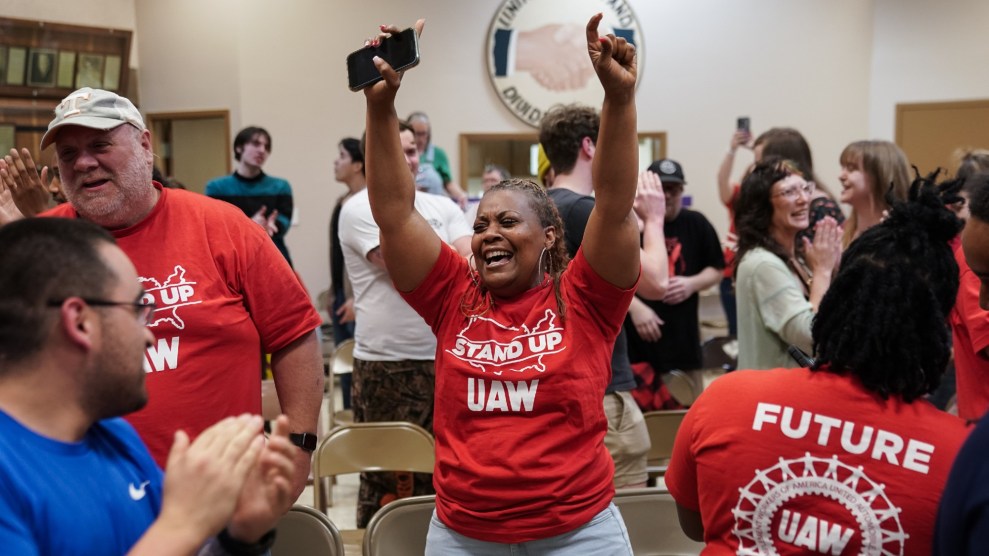Babies drink more, eat more, and breathe more, proportionally, than adults — which means they are proportionally more susceptible to environmental toxins. Yet federal environmental standards are, by and large, set at levels designed to protect healthy adults. The incidence of serious childhood illness is on the rise (pediatric brain tumors rose 25 percent from 1973 to 1991), and a growing body of research is implicating legal levels of household toxins.
Two years ago, Sen. Barbara Boxer (D-Calif.) introduced the Children’s Environmental Protection Act, which would require that federal standards be set at levels safe for infants. To date, the bill is stalled in committee, which should come as no surprise: According to the Center for Public Integrity, between 1988 and 1995 Congress failed to pass any of the more than 65 bills designed to tighten pesticide regulations (although it did manage to pass 151 bills in the past decade that help pesticide manufacturers). In light of such regulatory undersight, here are some prime toxic suspects.
Toys It’s not just chemicals in toys that can be dangerous. Some 90 percent of American households use home pesticides, and particles from foggers and sprays can linger on the surfaces of toys, carpets, and furniture, even if you follow the manufacturers’ instructions.
Pets Many of the chemicals used in flea and tick products (flea collars, bug sprays, no-pest strips) are similar to those used in household pesticides, and recent studies have linked them to childhood cancer and leukemia. Specific chemicals to look for include 2,4-D, carbaryl, Diazinon, and dichlorvos.
Air pollution The incidence of pediatric asthma rose 72 percent between 1982 and 1994. While the jury is still out on whether car exhaust, industrial pollution, and other airborne toxins cause asthma, they definitely worsen symptoms. The American Lung Association sued the EPA in 1996 to tighten emission standards for sulfur dioxide, “a potent trigger of asthma attacks in children,” according to Ron White, the ALA’s director of national programs. The ALA won the suit, but new standards have yet to be established.
Baby bottles Bisphenol-A, a chemical found in many plastic products, including baby bottles, is an endocrine disrupter that imitates estrogen. Research by World Wildlife Fund scientists has suggested that these chemicals are behind the widespread early onset of puberty in girls, declining male birthrates, and infertility.
Food Pesticides on fruits and vegetables can pose a serious risk to children. Especially dangerous are organophosphates, neurotoxins that do long-term damage to the central nervous system. The Food Quality Protection Act, passed in 1996, is supposed to regulate the amount of residual pesticides in foods, but it has yet to be implemented. Currently the EPA is holding “stakeholder” meetings (attended by industry representatives) to discuss allowable pesticide levels.















